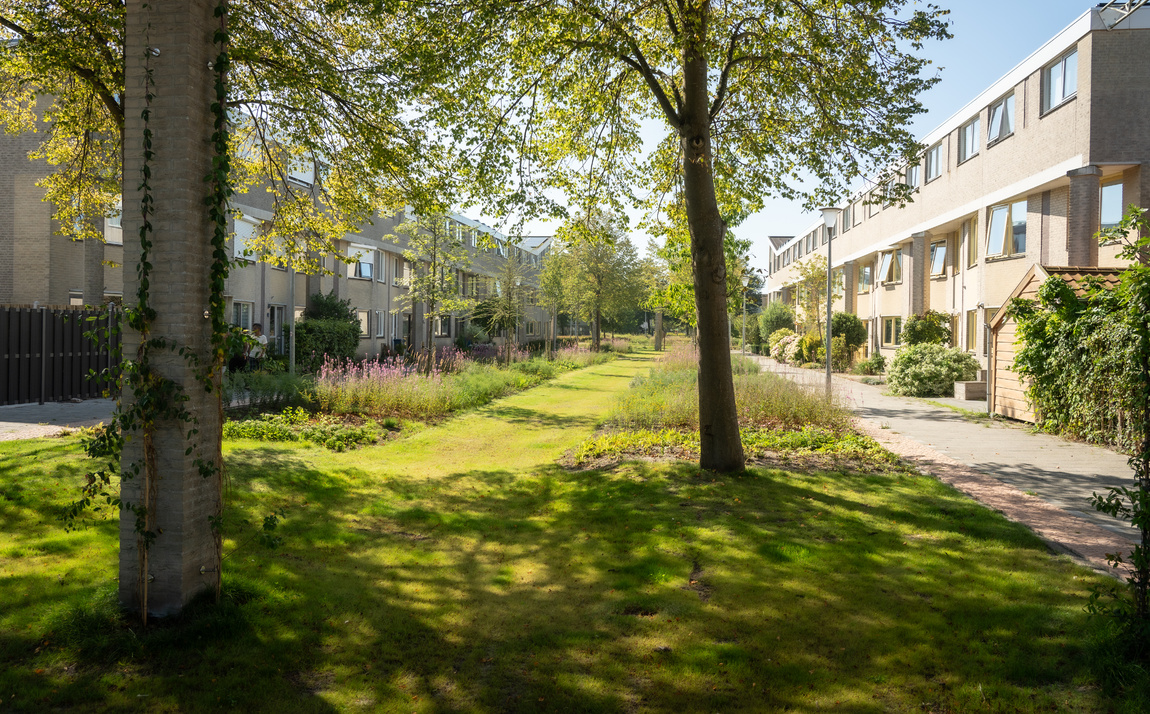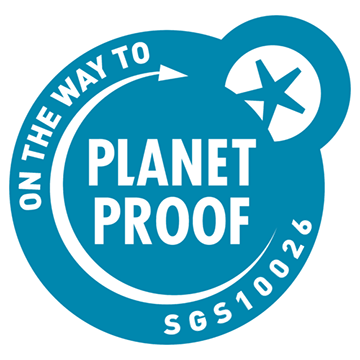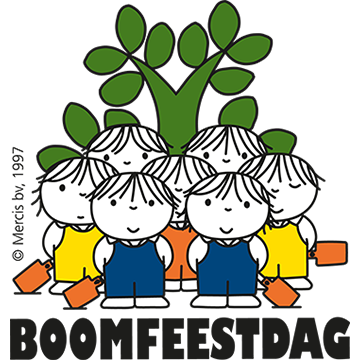“The neighbourhood has been made climate-adaptive and greened up at the request of the local community, a plan that has been in the pipeline at the local council for quite a while now,”
Hans de Riesstraat in Alkmaar is a great example of how a paved neighbourhood can be transformed into a green, climate-adaptive and biodiverse environment. This project came about through a collective endeavour on the part of local people, the municipality of Alkmaar and Stadswerk072, and demonstrates how urban greening can be used effectively.
Residents’ initiative
The greening of Hans de Riesstraat started out as an initiative by the residents themselves. They submitted a request to transform their paved environment into a greener and more pleasant place. “The neighbourhood has been made climate-adaptive and greened up at the request of the local community, a plan that has been in the pipeline at the local council for quite a while now,” according to Paul Weidema, Senior Project Manager at Stadswerk072.
The design taps into blue-green infrastructure principles, whereby rainwater is discharged naturally. 23 street gulleys were removed in the road, which means that rainwater can now filter into the earth slowly via newly installed wadis, and plants continue to receive sufficient moisture even in dry weather. 19 downpipes have also been disconnected from the drains in consultation with residents. Rainwater is now guided towards the wadis using special paving.
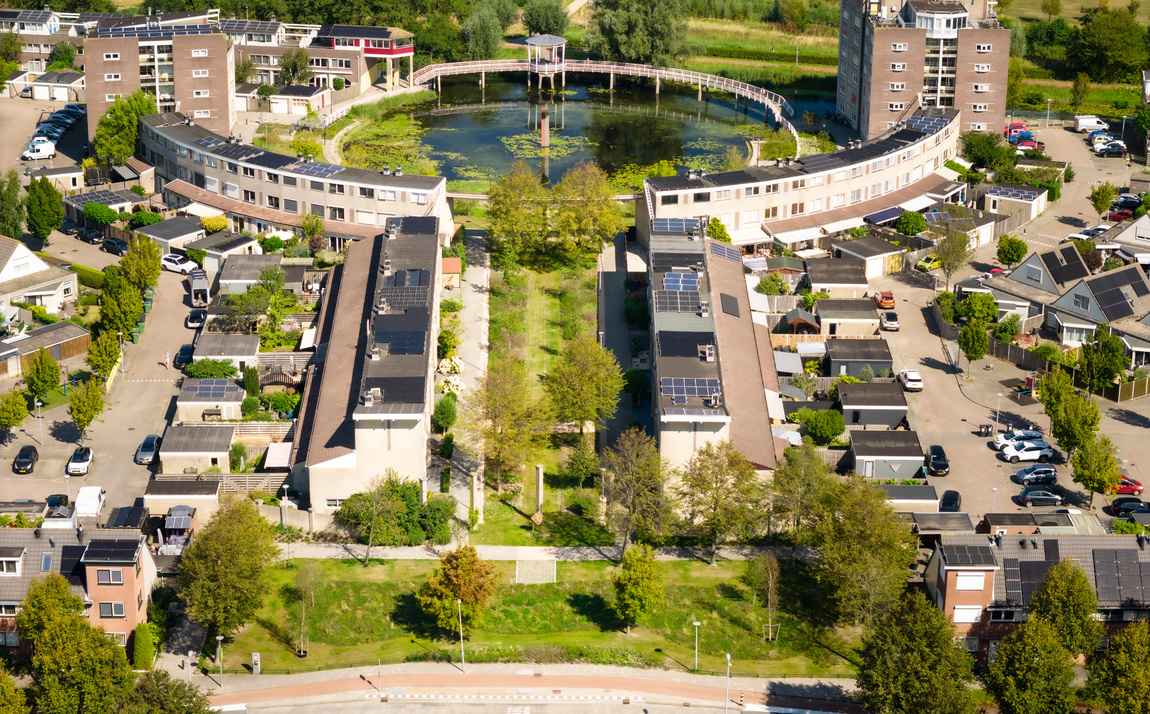
Diverse and innovative green design
What makes the design of Hans de Riesstraat unique is the use of a great variety of trees and plants. For biodiversity, a mix of multi-stem trees and standards was deliberately selected, not only providing visual variation, but also creating different habitats for birds, insects and other animals. The in total 33 trees were selected in consultation with, and supplied by, Ebben Nurseries.
In addition to the trees, berry-bearing shrubs attractive to birds have also been added, as well as perennials that are fully SKAL certified. Flowering bulbs, different herbs and native wildflower mats ensure an ever-changing array of colours throughout the year. Aquaroll was used for plants along the water’s edge, which further enhances biodiversity in and around the water. “In terms of trees, many different species were used for biodiversity. Both multi-stem trees and standard trees,” according to Weidema.
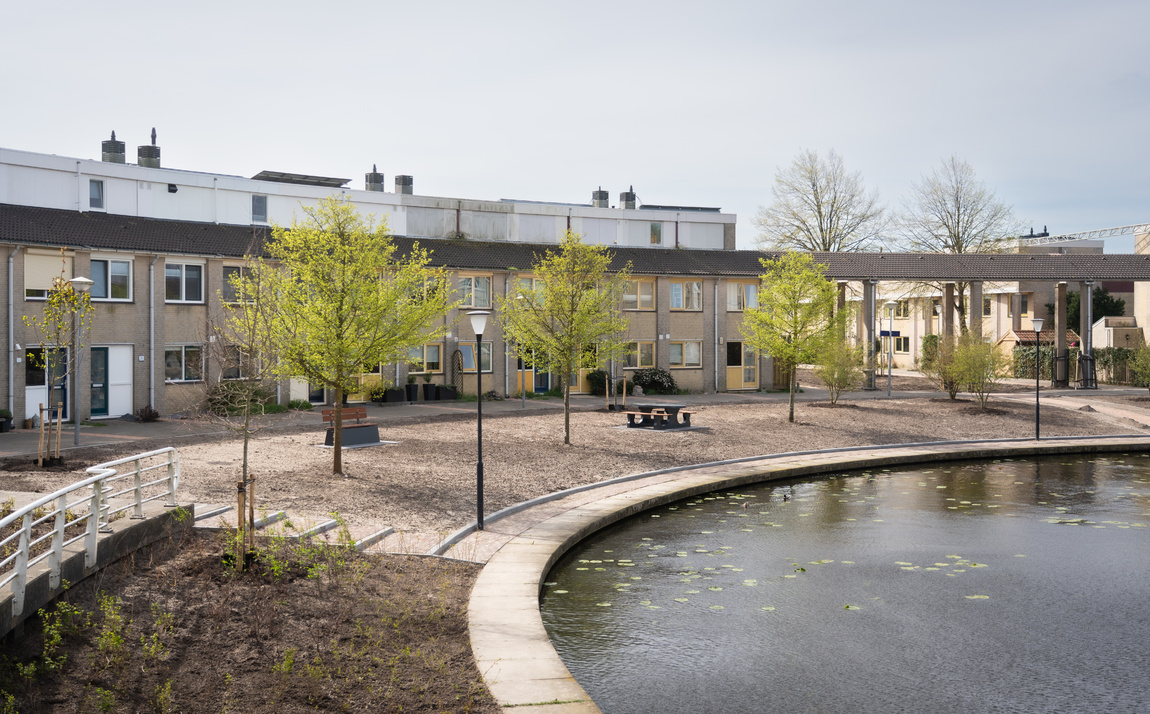
Cooperation with Ebben Nurseries
Ebben Nurseries was a conscious choice. The trees supplied by Ebben meet the high standards of quality and appearance as required by this project. The trees were carefully selected at the nursery before delivery. There was also a pro-active approach concerning which tree species best fit the design and the surroundings. “When it comes to multi-stem trees, Ebben matches what we're looking for in terms of quality, requirements and look,” according to Weidema. This cooperation resulted in a green area perfectly aligned with the character of Hans de Riesstraat.
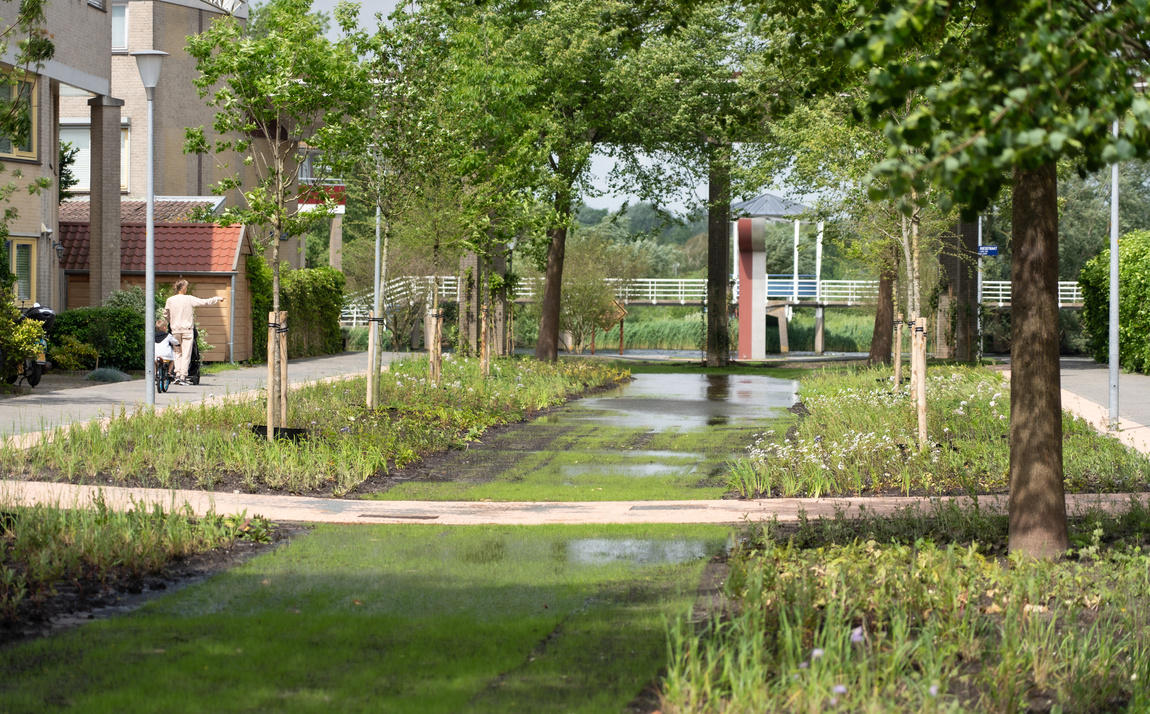
An acclaimed project
The success of the greening of Hans de Riesstraat did not go unnoticed. The project was declared the Dutch winner of the Green Cities Europe Award 2024, a prestigious accolade for innovative green projects in urban areas. In addition, the project has been certified by NL Greenlabel, underlining the importance of sustainability and ecological value in its development.
Source of inspiration
Hans de Riesstraat is not only an example of what is possible within an existing neighbourhood but also a source of inspiration for future blue-green projects. It demonstrates how cooperation between residents, the authorities and suppliers can lead to a liveable, resilient and green environment.
Images provided by Stadswerk072




